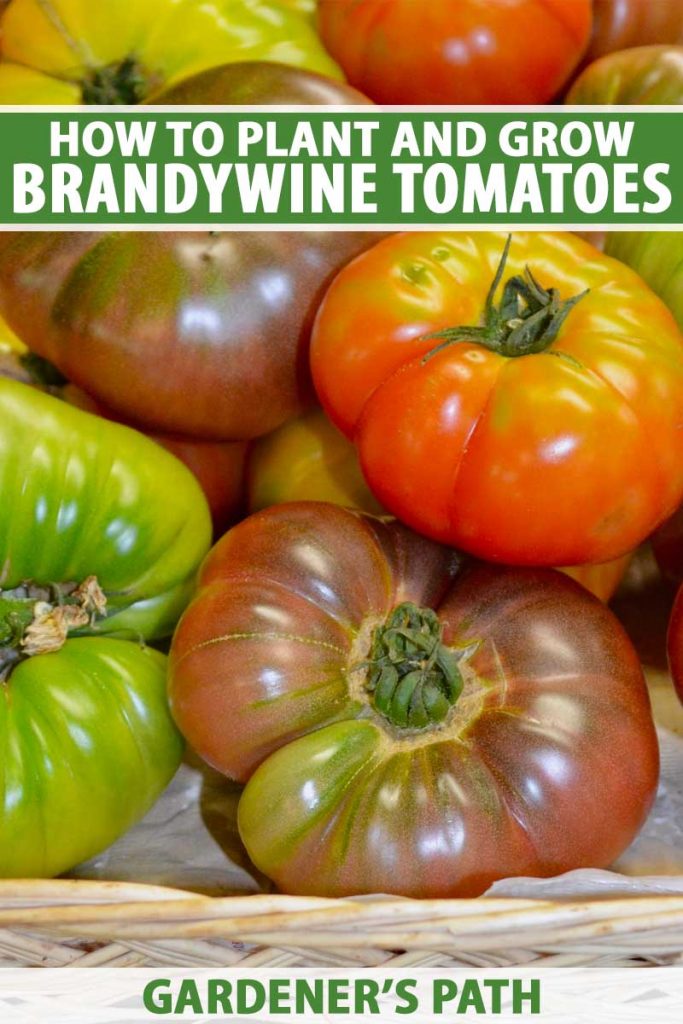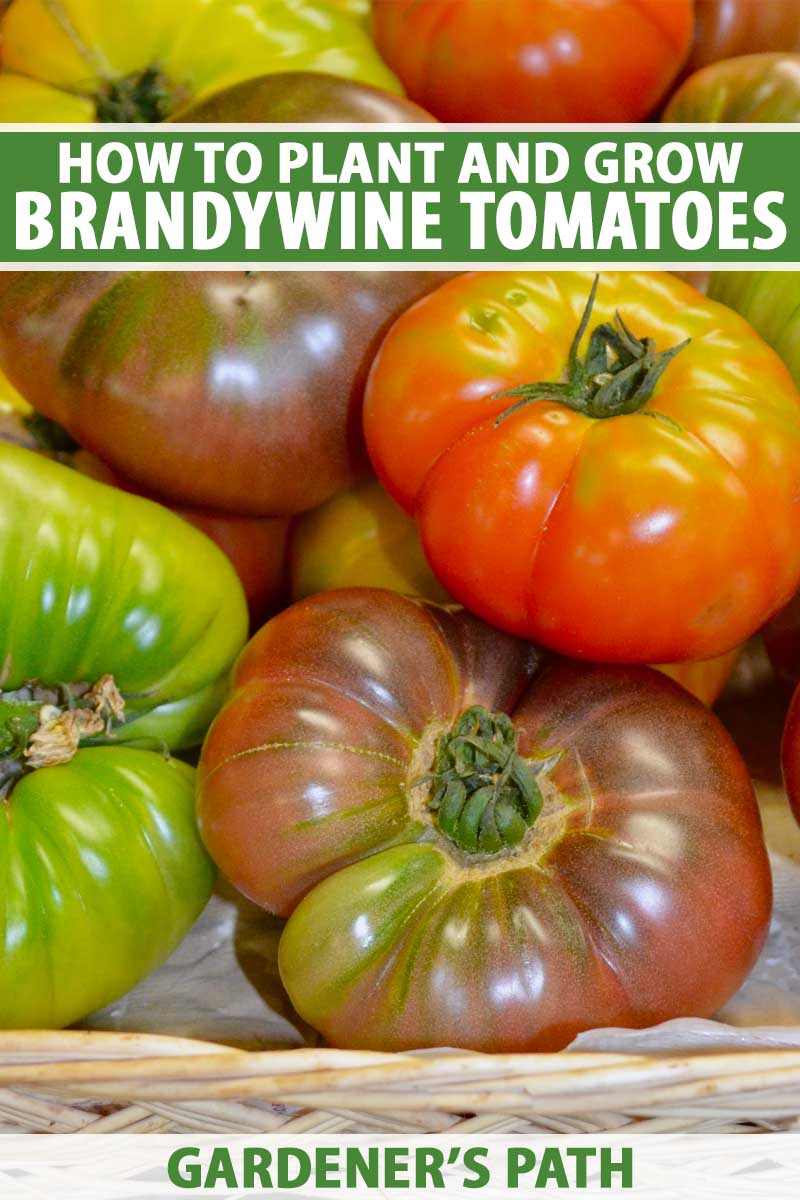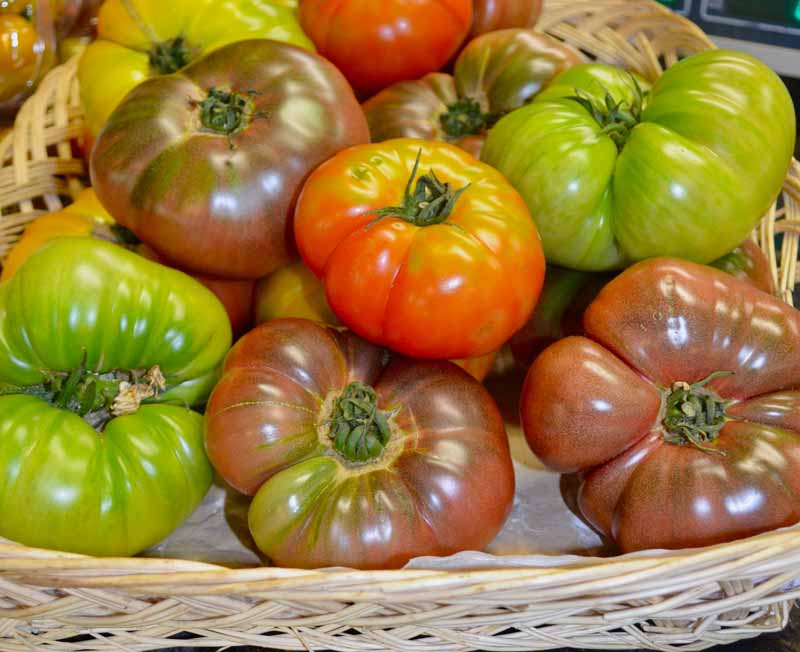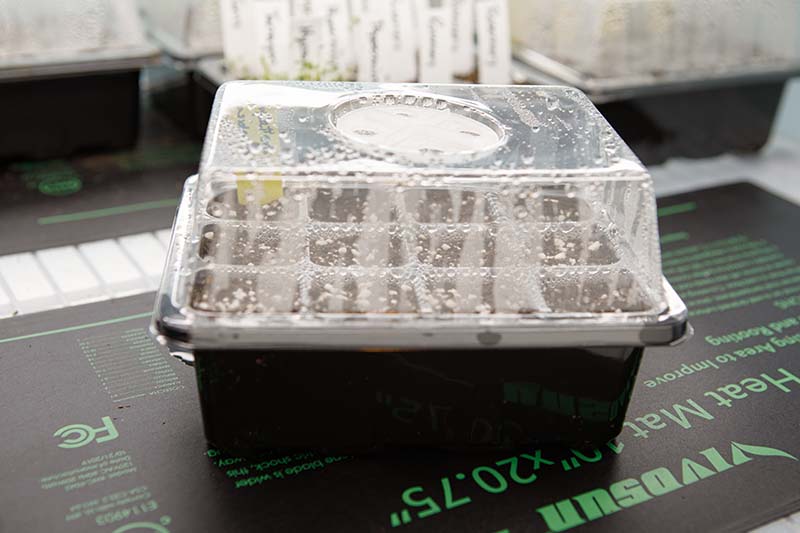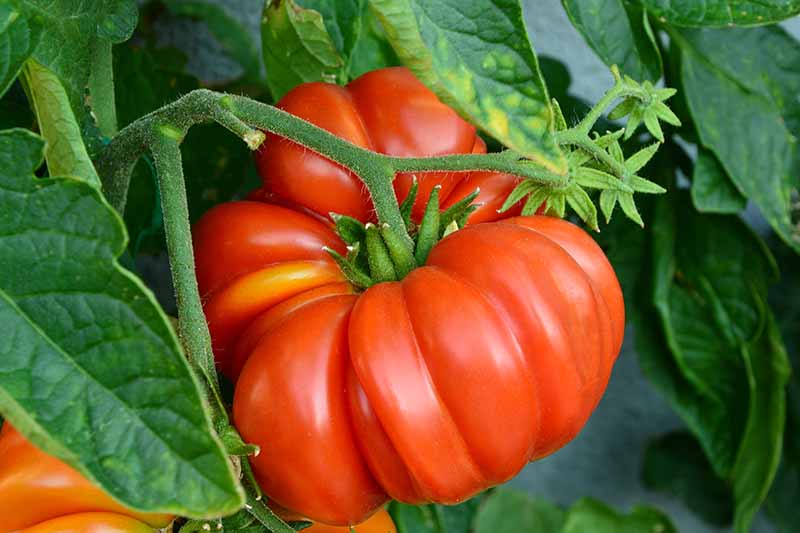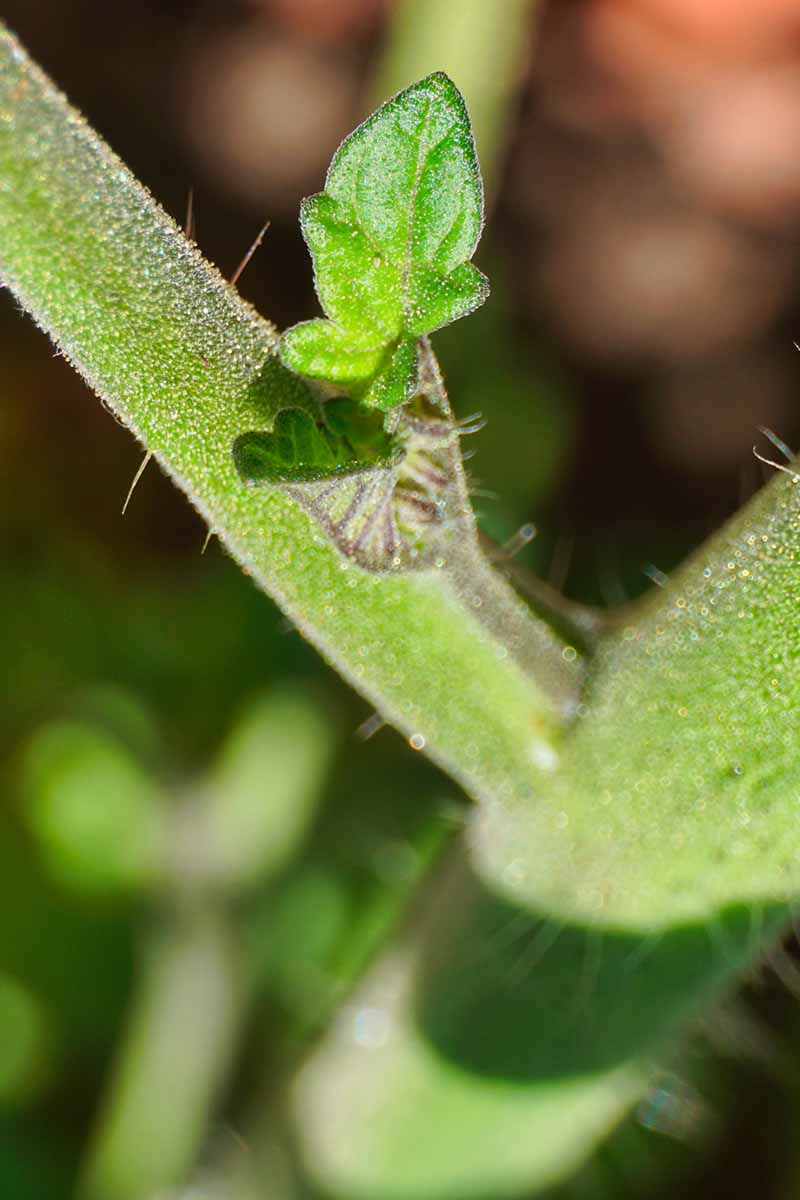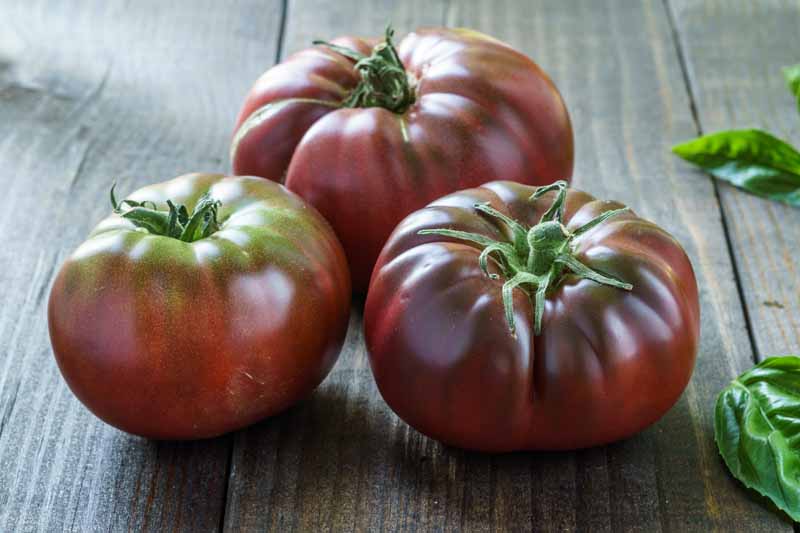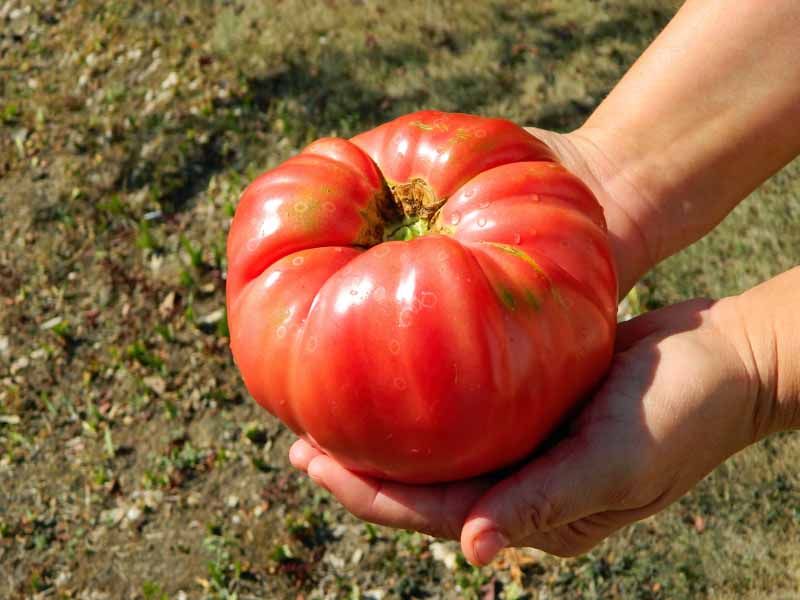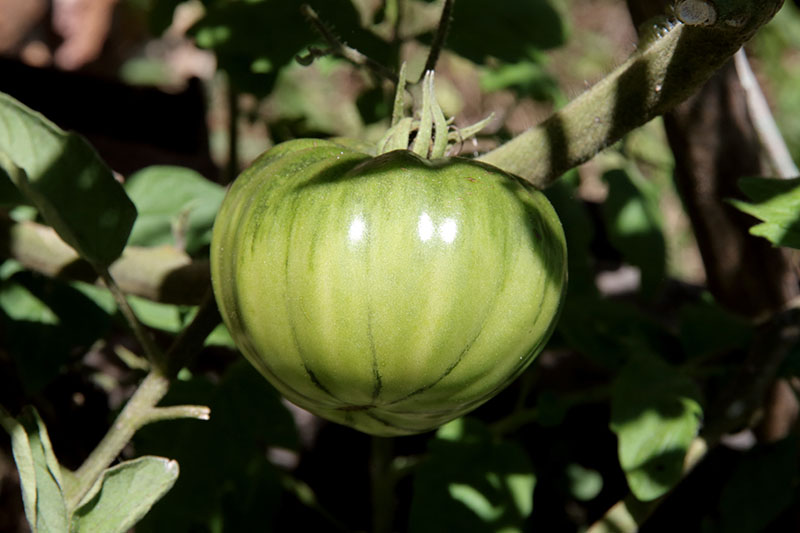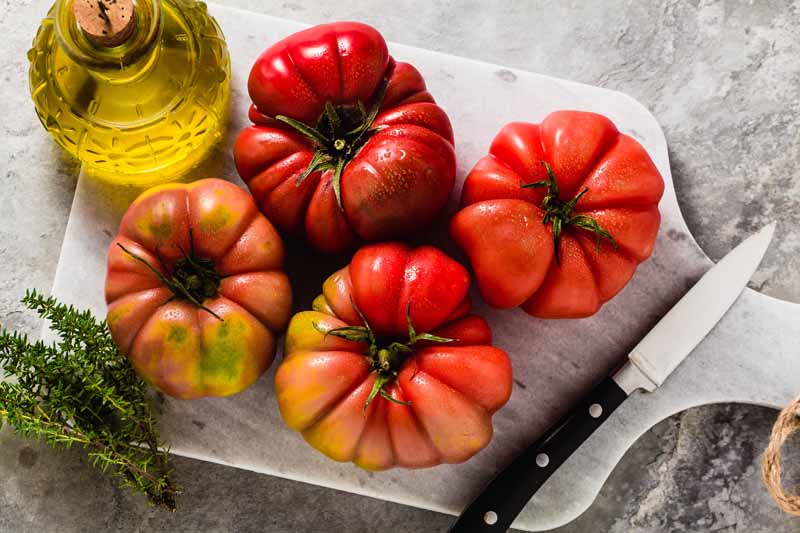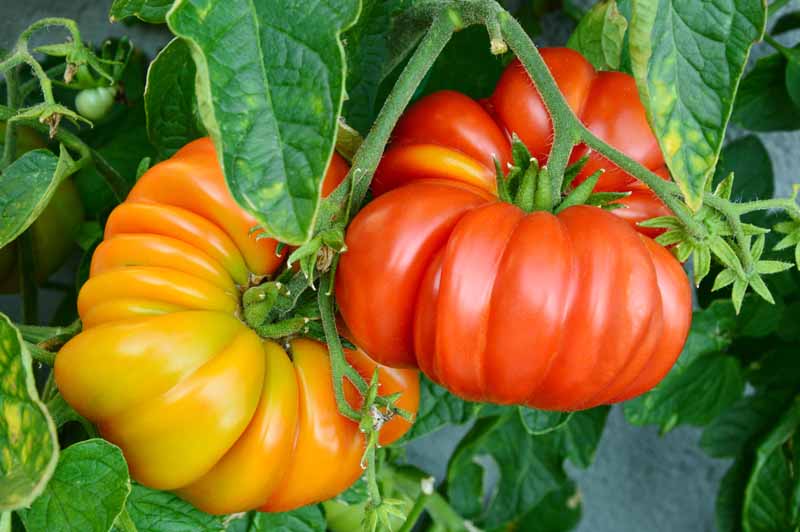In my opinion, there is nothing quite as juicy and flavorful as a freshly sliced ‘Brandywine.’ And I am not the only one who thinks so. Perfect on a sandwich or tossed in a fresh summer salad, the large juicy fruit of this popular heirloom is widely regarded as one of the tastiest tomatoes. We link to vendors to help you find relevant products. If you buy from one of our links, we may earn a commission.
What Are ‘Brandywine’ Tomatoes?
‘Brandywine’ is an heirloom cultivar hardy to USDA Zones 3 through 9, grown for its large, beefsteak-type fruits that can be red, pink, or yellow in color. Fruits are ridged with an asymmetrical shape, and can grow to weigh up to two pounds each. Due to their substantial size and flavorful fruits, they are one of the most popular types of tomatoes for slicing and enjoying on sandwiches. The plants can also be distinguished by tall vines which can reach up to nine feet in height when trained, as well as by their unique foliage. Leaves are smooth and oval with pointed tips, much like those of a potato plant. One of the slower maturing tomato cultivars, they take 80 to 100 days to produce fruit. But these plants have what is known as an indeterminate growth habit, meaning that once they mature, they will continue to bloom and produce fruit as long as conditions are favorable.
Cultivation and History
Grown for over a century, these are one of the older heirloom types available commercially, and were one of the first varieties to appear in seed catalogs in the late 1800s. However, there is some question as to their history. It is often said that they are of Amish origins, but there is no clear evidence to trace this connection. We do know that in 1982, an Ohio gardener by the name of Ben Quisenberry had ‘Brandywine’ seeds listed by Seed Savers Exchange. He claimed to have received true original ‘Brandywine’ seeds from Dorris Sudduth Hill, which had been passed down in her family in Pennsylvania for over 80 years. Seed catalogs such as Burpee and Johnson and Stokes also had ‘Brandywine’ available beginning in the late 1800s. Whether these seeds originated from the same cultivar remains uncertain. Furthermore, many gardeners have saved seeds over the years and as a result, many substrains have developed. There are many similar cultivars with “Brandywine” in the name, though it is not likely that all share the same origins. Wherever they came from originally, one thing is certain: Brandywines hold a place as one of the most popular homegrown tomatoes.
Propagation
‘Brandywine’ requires a long growing season and is best started indoors a couple of months before the last frost, when seedlings can be safely planted outside. Start by sowing seeds a quarter of an inch deep in two- to four-inch pots in potting soil that drains well. Germination is faster in warm soil that is between 65 and 90°F. I start my seeds on a heat mat, cover them with a plastic lid, and mist daily to keep the medium moist. Once seeds germinate, transfer them to a bright window or warm greenhouse, or set under a grow light. Remove any lids or humidity covers. Providing 12 hours of light per day is ideal for seedlings. Plants are frost sensitive, and should not be planted out until you are sure the threat of frost has passed, when air temperatures are consistently above 55°F and soil temperatures are at least 65°F. It is important to harden off seedlings for a week or two before transplanting outside to help them acclimatize to outdoor conditions. This means gradually reducing supplementary water and setting containers outside in a protected, shady spot for increasing lengths of time each day, slowly increasing exposure to sun and wind. Be sure to do this during daytime hours to avoid subjecting plants to cold temperatures. When you are ready to plant your seedlings out in the garden, pinch the bottom leaves off each seedling, leaving at least a couple of leaf sets at the top of the plant. Dig a hole about two-thirds as deep as the height of the plant and twice the width of the root ball. Set your seedling in the ground so the remaining leaves are at least a couple of inches above ground level. Refill the hole with soil and water well.
How to Grow
Growing ‘Brandywine’ is not much different than growing other types of tomatoes. Being a bit of a delicate heirloom, you may need to give these plants just a little extra TLC. You can read more about how to grow tomatoes on our in-depth guide. Choose a location that receives at least eight hours of direct sun a day. Seedlings should be planted every 24 to 36 inches in rows two to four feet apart in a bed of well drained, fertile soil that is high in organic matter. Work a few inches of compost or aged manure into the top foot of soil. The soil should be slightly acidic, with a pH of about 6.0-6.8. If you have the space, it is best to avoid planting where tomatoes, potatoes, peppers, or eggplant have recently grown to avoid the risk of disease spread. Rotate nightshade crops every couple of years if possible. Mulching with at least a couple of inches of straw or shredded leaves will help to keep the soil warm, improve drainage, and reduce weeds. Keep mulch back a couple of inches away from the stems. Weed regularly and provide adequate water. Plants need an inch of water a week. Water at the base to avoid splashing leaves, which can promote disease. Tomatoes benefit from an abundance of available nutrients. In my experience, planting in nutrient rich soil with lots of organic matter will produce the best results. You can also choose to supplement with fertilizer. Do this by either side dressing with organic fertilizer when plants begin to set fruit and again every one to two months, or apply a liquid solution of fish emulsion, seaweed extract, or compost tea around the base of plants and as a foliar feed every two weeks. Look for a fertilizer with a 5-10-10 NPK ratio. If you use a fertilizer with too much nitrogen, you risk encouraging increased foliage growth at the expense of fruiting.
Growing Tips
Plant in full sun, in well draining soil high in organic matter.Provide 24-36 inches of space between plants, in rows two to four feet apart.Don’t plant where nightshades have grown recently.Apply mulch to regulate soil temperature, improve drainage, and reduce weeds.Water at the base, providing an inch of water per week.
Pruning and Maintenance
Since these massive vines can reach six to nine feet tall in ideal growing conditions, it is a good idea to use cages or trellises to support them as they grow. You can train the stems to grow up the stakes and prune them to narrow their spread. Remove the suckers that grow in the nodes between the main stem and the leaves when they are small. This will keep plants from sprawling, improve airflow, and focus more energy on fruit production. It is also a good idea to trim any foliage that touches the ground to decrease the risk of blight.
Managing Pests and Disease
Since they take a long time to ripen and aren’t particularly disease resistant, they are susceptible to nearly all of the common types of tomato pests and diseases. No matter the color, these large, superb-tasting beefsteak fruits can grow up to two pounds each! True Leaf Market has red, pink, and yellow ‘Brandywine’ seeds available for purchase. Yellow ‘Brandywine’ Eden Brothers offers all of these as well as a black one. ‘Brandy Boy’ Burpee also sells a hybrid called ‘Brandy Boy’ which has all the flavor of the heirloom ‘Brandywine,’ but is bred to be more disease resistant and shapely with larger, earlier yields. Tomatoes can be plagued with many pathogens including fungal diseases such as early blight, anthracnose, and septoria leaf spot, a number of molds, bacterial pathogens, viral pathogens, and physiological disorders. Pests can also be a problem. I often find giant green tomato hornworms lurking in my veggie patch, just gorging away happily, quick to decimate entire plants! The dreaded tomato hornworm isn’t the only worry. Loopers, beet armyworms, slugs, and aphids can be a problem as well. In my experience, the best way to avoid pests and disease is to rotate plants every year, space well and prune to allow airflow, and always water at the base. Companion plantings of marigolds or some herbs can also help to reduce pests. Last year, I planted dill near my tomatoes to draw away the hornworms. The dill became covered in hornworms and I was able to easily pick them off and dispose of them. I didn’t have any issues on my tomatoes! Read our article for information on identifying, treating, and preventing common diseases in tomato plants. Check out our guide to common pests (coming soon!) for more tips. Not technically a disease, but a physiological condition instead, this cultivar is also prone to catfacing.
Harvesting
The fruits are ripe when they have turned from bright green to the color advertised on the package, typically either bright pink, red, or yellow. This should occur after approximately 80 to 100 days. Pick the fruits as soon as they ripen. If you wait too long, they can split or drop from the plant and become bruised. Once the harvest season begins, check regularly for new fruits and harvest continually as they ripen. Picking is easy. Simply grasp the stem and twist the fruit gently to remove. If you can’t quite wait 80 days, you can also try picking a few bright green ones to make fried green tomatoes! Or you can do the same at the end of the season if any fruit still remains on the plants when the first frost arrives.
Preserving
‘Brandywine’ tomatoes have a fairly short shelf life. Luckily there are many great ways to preserve them! Many gardeners like to freeze or can the fruits for future use in cooking. They are particularly yummy when dried as well, as they retain their sweet flavor. For specific instructions on the different ways to process and store tomatoes, check out this article.
Recipes and Cooking Ideas
While it’s certainly nice to be able to store some for later, my favorite way to consume ‘Brandywine’ is fresh off the vine – and I don’t usually have trouble eating them all! With a superb flavor and beefy flesh, these fruits really are the perfect sandwich tomatoes. These qualities also make them great for baking or cooking into soups, sauces, and stews. I particularly love them sliced and baked on top of a pizza or flatbread, or chopped to make bruschetta. If you’re looking for a recipe to try, get creative with this pizza-like pastry featured on our sister site Foodal made with heirloom tomatoes, fresh basil, sweet balsamic, and creamy ricotta on a buttery einkorn flour crust. Try to remember to snap a photo of this colorful creation before you dive in for a bite! Or, if you are looking for a way to use dried tomatoes, check out this summery spinach and sun-dried tomato pasta salad, also on Foodal. It is quick and easy to prepare, and a great summer side dish for a barbecue! If you haven’t yet, I would highly recommend adding these fabulously flavorful heirlooms to your must grow list. Just one taste and you will understand why. We love to hear from our readers. Do you have experience growing ‘Brandywine’ tomatoes in your garden? Share your tips in the comments below! Want to learn even more about growing healthy and flavorful tomatoes? Check out these articles for further reading:
How to Save Tomato Seeds for PlantingWhat Is an Heirloom Tomato?How to Prevent, Identify, and Treat Blight on TomatoesWhen Is the Best Time for Planting Tomatoes?
